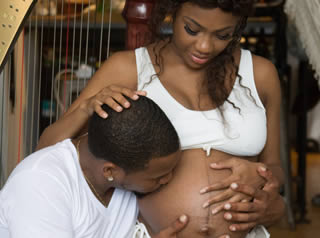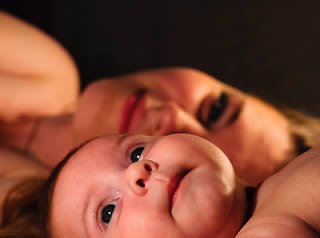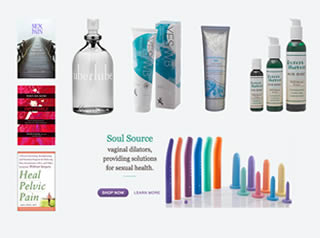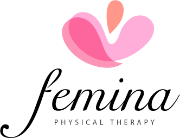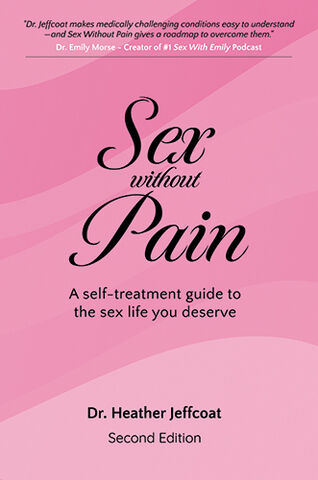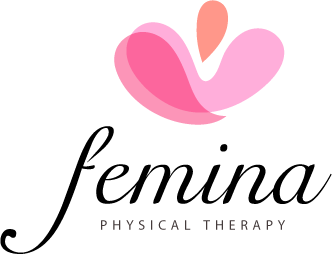
Published articles authored by Heather Jeffcoat, DPT, both in print and online.
- Details
- Written by: Heather Jeffcoat, DPT
- 24300 Views

Help for Pubic Symphysis Pain
International Journal of Childbirth Education. June 2009.
Heather Jeffcoat, DPT
Pubic symphysis pain, or anterior pelvic girdle pain, is one of a myriad of musculoskeletal pains that women may experience during pregnancy. This pain can be debilitating, requiring some women to use crutches or a rolling walker to alleviate the pain while allowing some mobility. Some studies report that up to 50% of pregnant women have some type of pelvic girdle pain prior to 20 weeks gestation. Additionally, this pain negatively affects perceived health and sexual life during pregnancy (Mogren, 2006).
Read more: International Journal of Childbirth Education | Help for...
- Details
- Written by: Heather Jeffcoat, DPT
- 20663 Views

Carpal Tunnel Syndrome During Pregnancy: Tips & Tricks to Ease the Pain
International Journal of Childbirth Education, March 2010
by Heather Jeffcoat, DPT
Carpal Tunnel Syndrome during pregnancy is a commonly overlooked problem by healthcare practitioners. It presents as mild to severe pain, numbness, and sometimes weakness in the hands, wrists and forearms along the distribution of the median nerve. At times, the muscles in the forearm ache due to compensations in movement or activity that may result.
The pain can occur at night, further disrupting sleep patterns. These symptoms may arise due to postural changes, increased edema, occupational stressors, or a combination of these. Often patients are told their symptoms will resolve after delivery. Although this is usually the case, patients can perform a few simple exercises that may ease or even eliminate this pregnancy complaint.
Read more: International Journal of Childbirth Education | Carpal...
- Details
- Written by: Heather Jeffcoat, DPT
- 13931 Views

Early Post-partum Recovery
International Journal of Childbirth Education. September 2009.
Heather Jeffcoat, DPT
Many providers will recommend starting pelvic floor physical therapy post-partum after six weeks, However, those first six weeks are an essential period where pelvic floor physical therapy could and should begin. It's the time to not just retrain your pelvic floor muscles, but also retrain your posture, support you with breeastfeeding postures to minimize discomfort and help you return to the activities you love without putting unnecessary strain on your pelvic floor. This article was written as part of a series I developed to support women during pregnancy and post-partum. Advocate for yourself to get started with post-partum pelvic floor physical therapy before six weeks!
After birth, the first six weeks are a critical period to begin exercise to get your body into pre-pregnancy shape. But, where to begin? Many changes occur in the musculoskeletal system during pregnancy and birth. The hormone Relaxin has influenced every joint in your client's body, creating ligamentous laxity which will last for 3-4 months post-delivery. This effect is longer if your client is breastfeeding. Their center of gravity is suddenly shifted, which can create problems with balance.
The abdominal muscles become gradually overstretched and weak with pregnancy. The hip flexor and lower back muscles tighten as they are placed in a shortened position due to postural changes that occur during pregnancy. Additionally, the pelvic floor muscles are stretched relatively quickly during vaginal birth, and tearing may occur. Unfortunately, these muscles do not immediately return to their pre-pregnancy states.
Read more: International Journal of Childbirth Education | Early Post...
- Details
- Written by: Heather Jeffcoat, DPT
- 13132 Views
Childbirth Injuries
PT Products Magazine. July 2009
Heather Jeffcoat, DPT
You had the perfect pregnancy. Everyone in the delivery room told you the delivery went smoothly. At your six-week checkup, your doctor tells you that everything looks great. So, how long will this incontinence last? And when will this pain go away?
Pelvic pain is an often neglected problem, that many women experience after childbirth. However, when pain persists beyond the first few weeks, patients are often hesitant to mention it to their healthcare providers. Oftentimes when they do, they are told “it will get better with time” and no further support is provided.
This pain can persist for weeks, months and sometimes years. That is a long time to wait, especially if the pain is preventing you from returning to exercise, playing with your little one, or even enjoying intimacy with your spouse. There are several potential sources of persistent postpartum pelvic, vaginal or rectal pain. These include scar tissue hypersensitivity, peripheral nerve injury or entrapment, joint injury or pelvic floor muscle spasm.
- Details
- Written by: Heather Jeffcoat, DPT
- 12778 Views

“I do Kegels, but they don’t work”
International Journal of Childbirth Education, June 2009
Heather Jeffcoat, DPT
Post-partum urinary incontinence is a common problem. But is it normal to experience urinary incontinence after you've delivered a baby?
There is a typical history I encounter in my practice—“I’ve had two kids and now whenever I laugh or sneeze, I experience urine leakage”. But it’s normal, right? I always tell my clients that the problem may have arisen because of childbirth, and maybe all of their friends giggle about this unfortunate consequence of having a beautiful and perfect baby. But it is not NORMAL—there is something you can do (other than surgery or medication) to get your pelvic floor muscle function back to normal. And it’s more than doing just Kegels.
Read more: International Journal of Childbirth Education |...
- Details
- Written by: Heather Jeffcoat, DPT
- 15428 Views

Help for Postural Pain after Breastfeeding
International Journal of Childbirth Education. March 2009
Heather Jeffcoat, DPT
Help for Postural Pain After Breastfeeding
This article provides help for postural pain after breastfeeding. In this joyous time of life, you don't want neck, shoulder and back pain to enter into your experience. With some key postural exercises, you can help reduce or eliminate the postural pain you have after breastfeeding.
One of the most precious bonds between a mother and her new baby is sharing the closeness of nourishing her child. Whether this occurs by breast or by bottle, there is nothing that compares to holding that little baby close, looking into their eyes and taking in that sweet baby scent. Over time, with poor positioning of her infant and adaptive postures that the mother will take on, musculoskeletal pain may develop. The most common place to develop these aches and pains are in the neck, upper and mid-back regions. They can be as mild as a dull ache felt between the shoulder blades to a debilitating tension headache that can make it difficult to care for her child.
Read more: International Journal of Childbirth Education | Help for...

